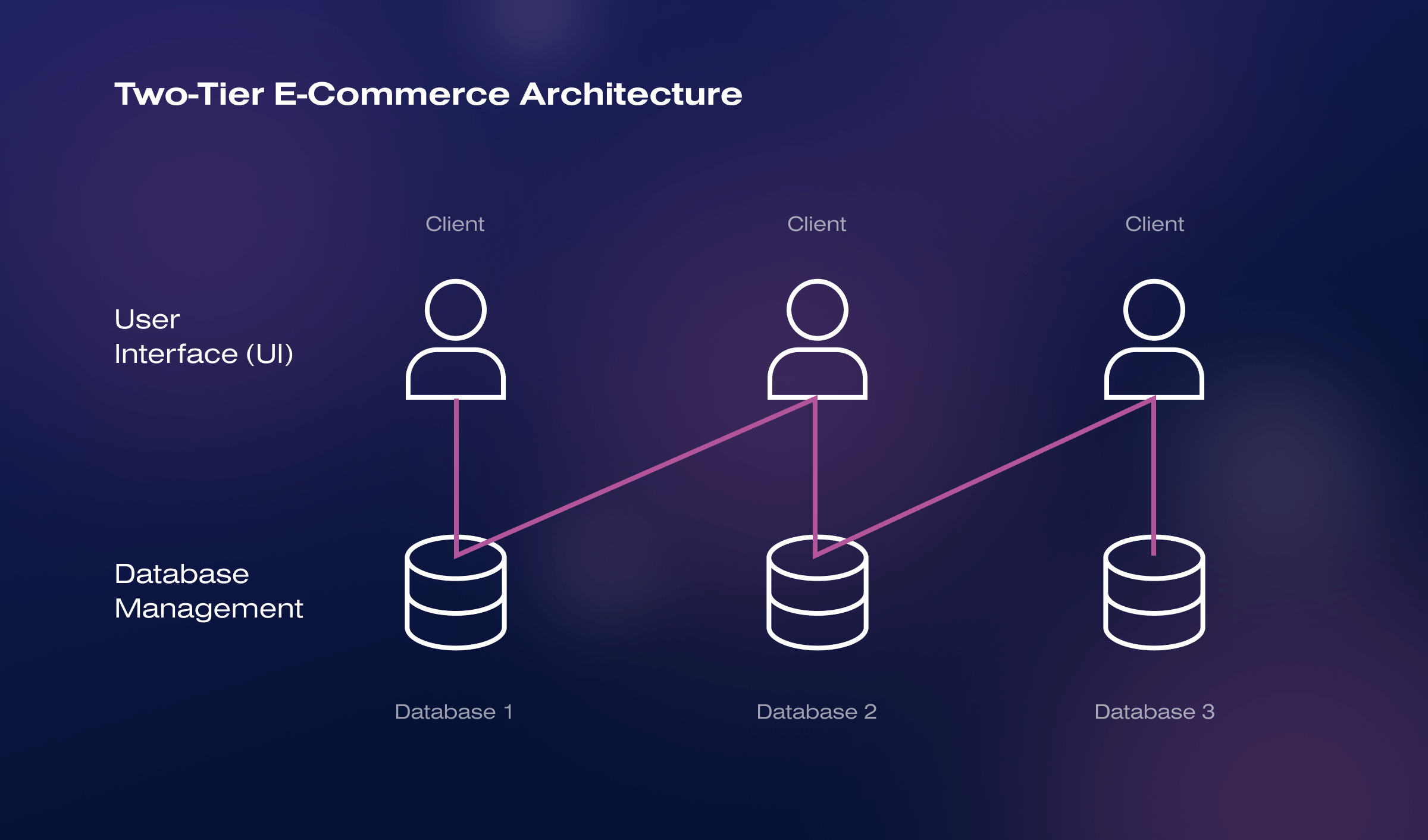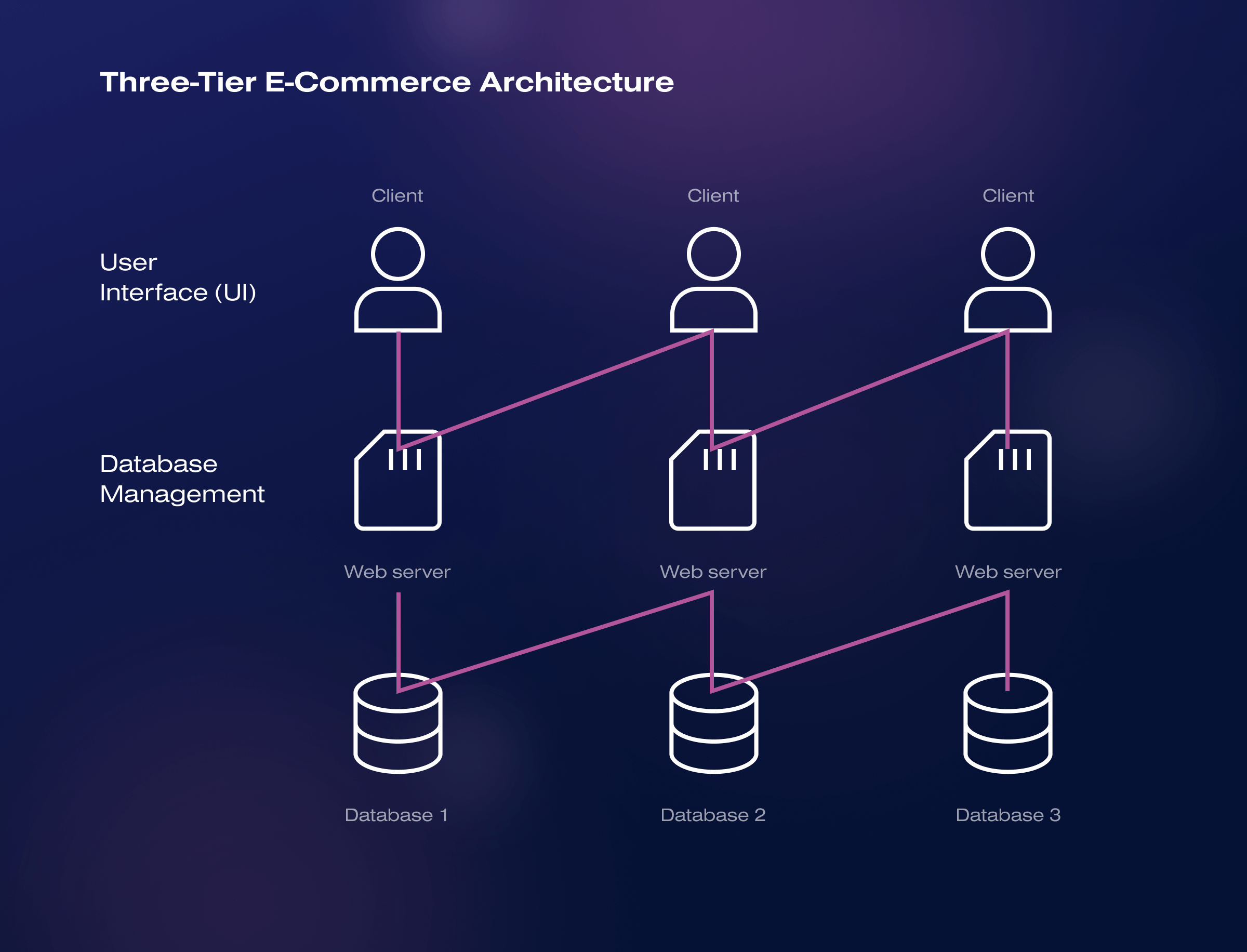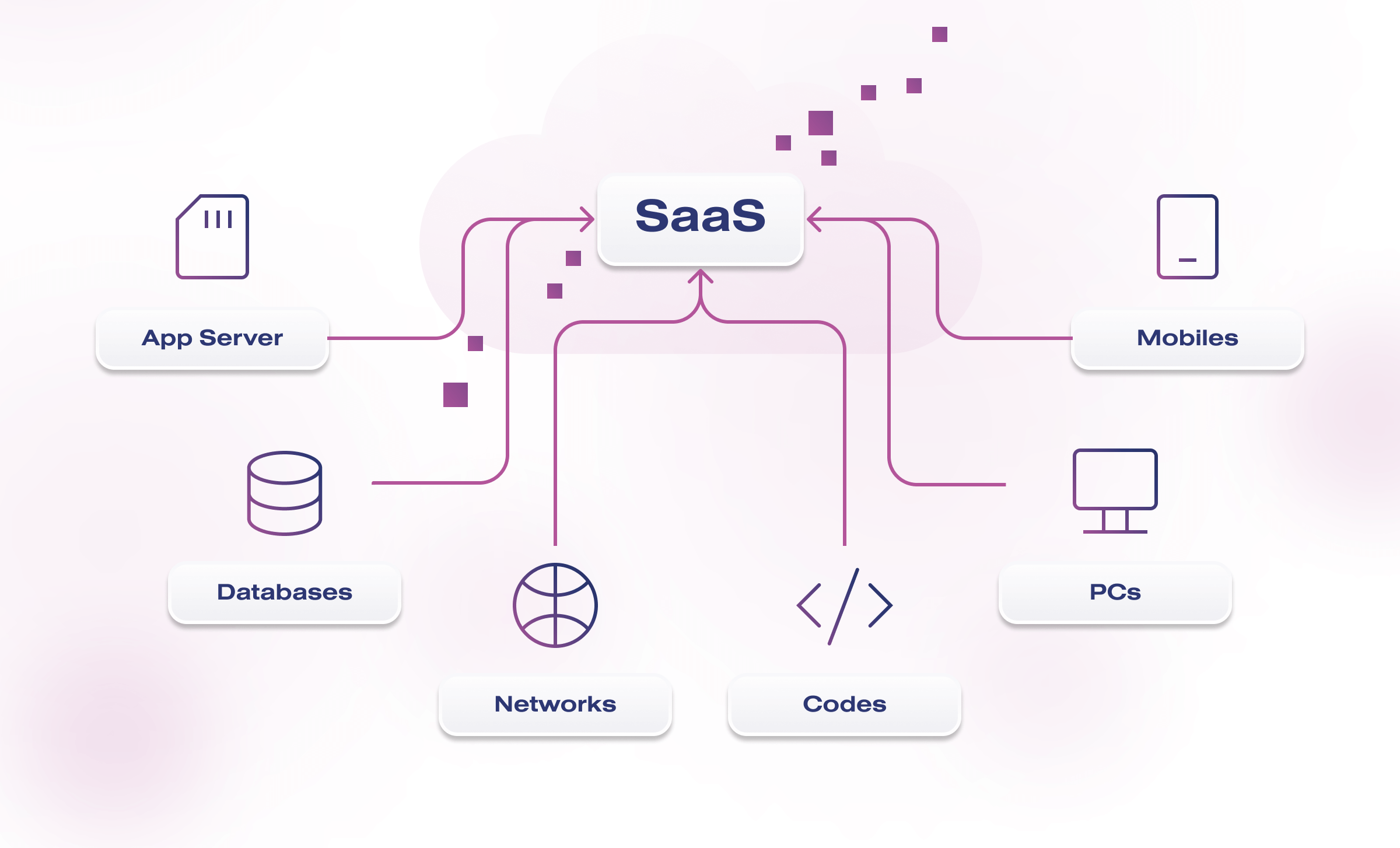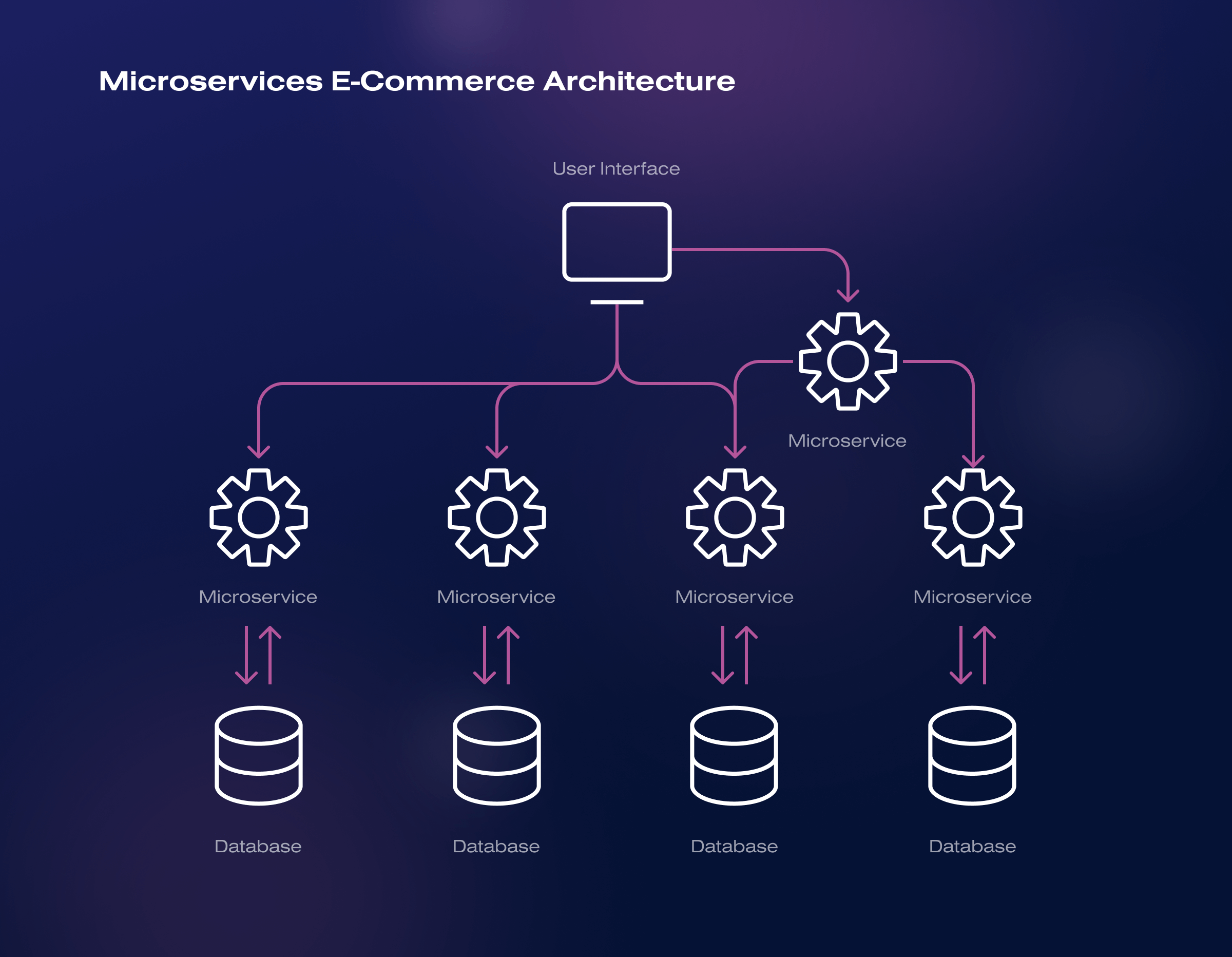If you run an e-commerce business, one of your top priorities and investments is to get and keep the customers. For users, the first impression is primarily based on their experience with your website. Referring to the statistics, people need only 0.05 seconds to form an image about your site. It depends on the design, the page downloading time, the structure, and more.
This article covers the importance of e-commerce architecture for your business, its impact, types, and how to build a scalable one and increase sales.
Key points
What is an E-Commerce Architecture, and why is it important
Let’s start with the definition: an e-commerce architecture is your website’s structure responsible for each block’s hierarchy and relation. In other words, it’s like building a house when you must ensure every part of the structure is placed correctly and works well.
Still, why did we devote a whole article talking about this architecture? The statistic says 61% of consumers would pay at least 5% more if they get an enhanced customer experience. The e-commerce architecture impacts SEO ranking, user experience (UX), integrations with plugins or other solutions, and much more. It means that with a better website structure, you are able to:
- get a higher ranking in search engines organically;
- provide an enhanced user experience and grow in revenue;
- stay competitive and scale your business efficiently.
Check out Soloway’s projects to learn how digital transformation helped online businesses to reach more customers and grow in revenue.
Factors to consider when choosing an E-Commerce architecture
Before describing the architecture types, let’s examine two essential preparation points. This stage will save you from unexpected expenses and resource costs.
Evaluate your starting position
You may already have an e-commerce platform, or you have to create the website from scratch. Also, set the business goals you want to achieve: to level up the brand awareness, provide a better UX, implement some functions, etc. Further, it will help determine the technical processes and technologies to use.
Visualize the architecture and choose the technologies
When you determine your goals, consider the future structure, including, for example, how you will store the data, what type of architecture meets your business goals, the navigation for users, etc. Also, it would help if you chose which third-party plugins and solutions you need and how many resources they require.
Types of E-Commerce Architecture
This section will give you insights into diagrams of e-commerce architecture types to benefit your online business.
Two-tier
It’s presented by two connected components — the client and the server’s sides. The user interacts with the database in real-time, sending or receiving information effortlessly. The main advantages of this type are:
- the possibility to create prototypes easily;
- straightforward developing and modifying processes;
- application fast running due to the direct communication between the client and server;
- matching many digital businesses;
- enhanced security that offers complete control over the server.

Three-tier
The main difference between this type and the previous one is the presence of a business side with three logical applications: the client, web/app server, and database layers. It offers the following benefits:
- better flexibility in deployment and configuration;
- the separated layer can be updated without impact on others;
- provides smooth software maintenance and modification processes.

Choose this architecture type if you need more complex features and functionalities for your e-commerce business.
Software as a Service (SaaS)
Cloud-based software offers an affordable and easy-to-use solution for start-ups or companies that can’t afford expensive systems. The main advantage of this type is that you can effortlessly update your website, scale, or implement changes. Your SaaS provider is responsible for the server maintenance, so you can ensure any problem can be quickly resolved.

Microservices
This type stands for building a website or an app as a set of services that have their responsibility and are not tightly dependent on each other. This architecture suits large businesses with a lot of complex projects. Let’s consider its advantages:
- continuous deployment allows you constantly improve the software;
- easy scaling offers the possibility to modify or even delete one microservice without impact on the whole system;
- APIs ensure better data security.

How to build a scalable e-commerce architecture
For now, e-commerce scalability is a trend that defines your company’s future. The reason is that customer experience has become the first and foremost priority for all digital stores. Referring to the statistics, customers spend 140% more time with brands that provide a high-quality experience. Let’s learn the practices on how to build a scalable architecture.
- Evaluate your current e-commerce architecture. This first step is intended to determine the architectural structure of the site and identify its weaknesses. This way, you can recognize what changes your website needs and how they will improve the scalability.
- Choose the technology. Check the architecture types we reviewed previously and decide which fits your business goals. Consider your current position and the growth plan, keeping in mind how you will develop the system and what needs it should cover.
- Start the development. It’s time to step ahead and begin the development process. Suppose you need an IT department or more professionals. In that case, you can hire a developers team with a Web Architect responsible for operating and guiding the other members.
How to be one step ahead of the competition?
According to the statistics, the website on the first page of search engines gets 95% of all the traffic. Good website optimization allows your commerce business to attract more users, boost conversion, and increase revenue. Let’s consider the leading practices for website optimization.
Use suitable keywords
It’s essential not just to find the keywords and phrases most frequently searched for in search engines. They should be relevant to your target audience, and this requires a detailed analysis. The next step is to list the words in the spreadsheet and map them to pages and content.
Add internal links
It’s a good practice to keep people on the website. Using SEO tools, you can implement the following:
- navigation links that allow people to use the layered website easily;
- contextual for blog pages or articles and others.
The statistic says that in 10 years, internal linking will still be a ranking factor. This practice will help you to improve the UX and reach more customers.
Create quality product descriptions.
Consider three points: uniqueness, usefulness, and relevant keywords. The text should contain beneficial information and meet the customer’s pain points. Also, keep in mind that the product description has to:
- be structured well;
- contain the keywords;
- cover the product’s benefits.
To get organic traffic, keep in mind that you write it for users, not for search engine algorithms.
Optimize images
It will not only help to optimize your e-commerce website but also convert leads. This practice requires two main points: provide high-quality photos for desktop and mobile versions and add the keywords to the code, such as title, alt attributes, and the image’s name.
Conclusion
Your e-commerce website has to provide the best user experience and help you in growing your sales and brand awareness. Providing a clear and intuitive architecture is vital to all these processes. To make it happen, entrust your site to Soloway, which has:
- 14+ years of experience in developing;
- proven digital commerce projects;
- full-fledged e-commerce development services.
Would you like to get a 100% customer-centric website and grow your digital business? Click here and contact Soloway today.




